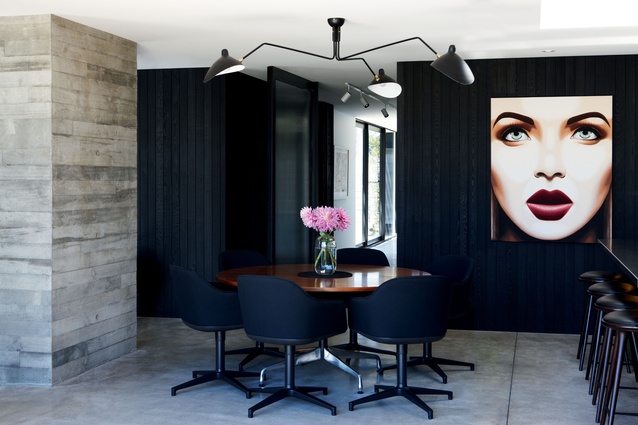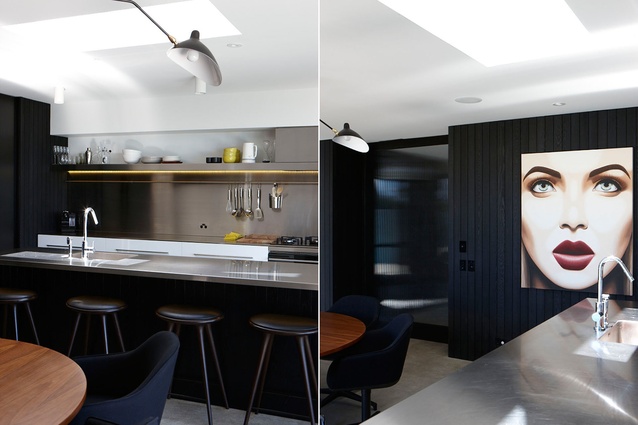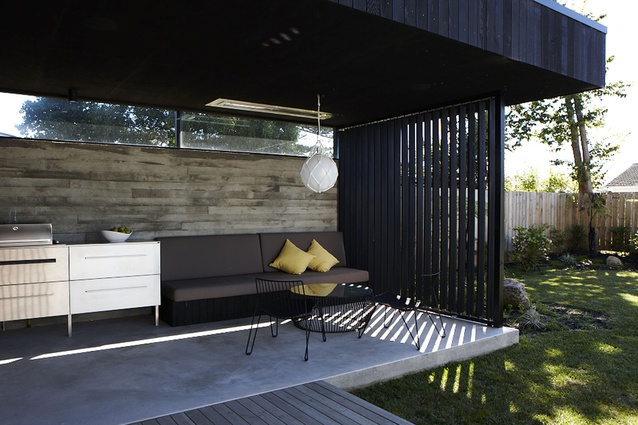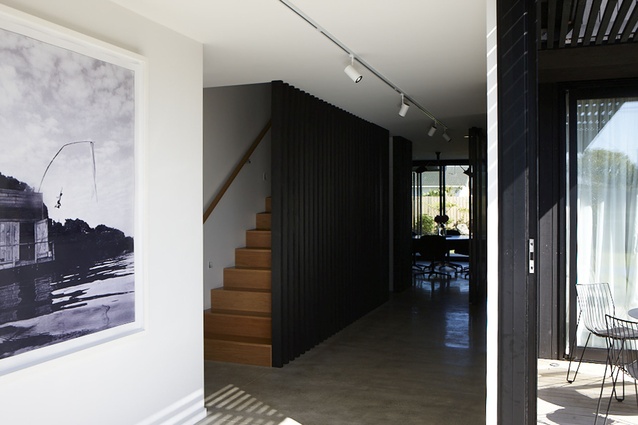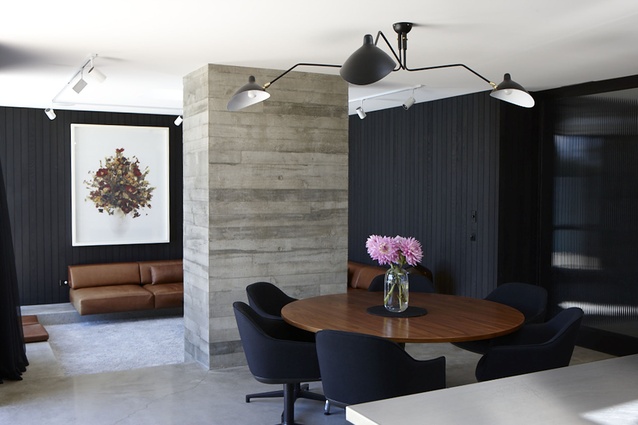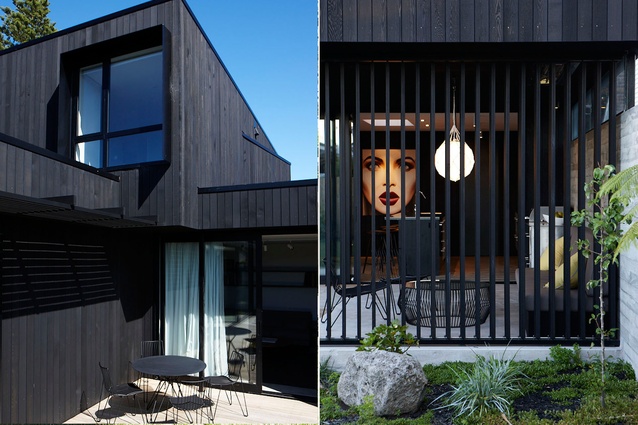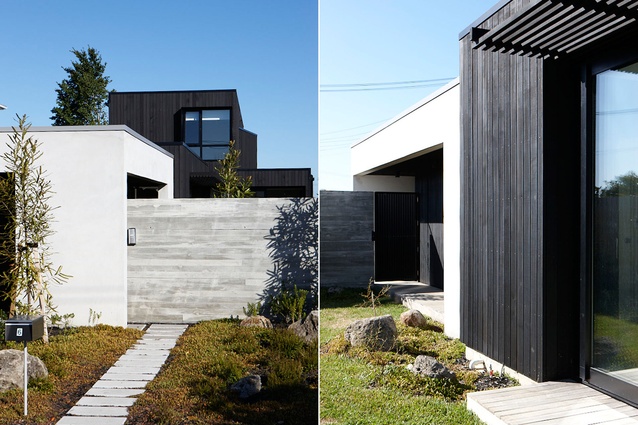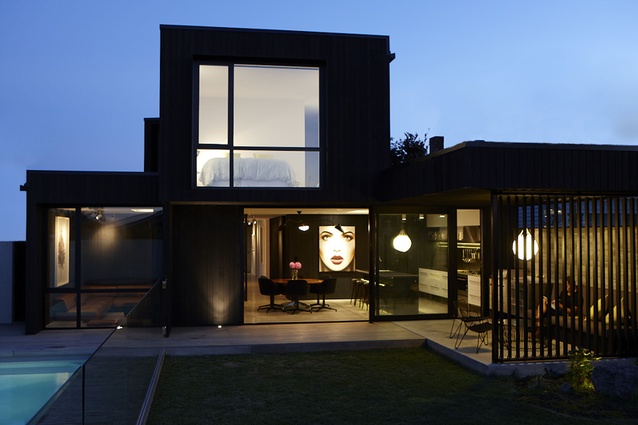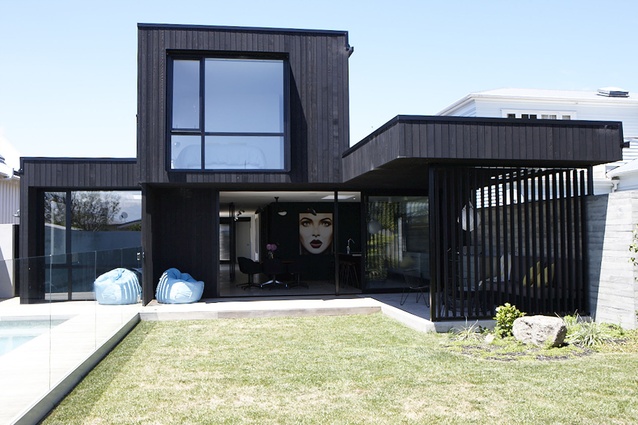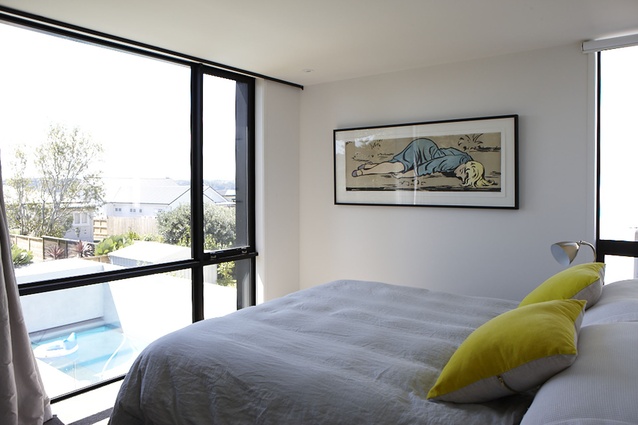Westmere House
Framed by a tall, iconic cypress tree and nestled next to a converted church, this family home in the inner-city suburb of Westmere is designed as a private oasis for the family who dwells in it. Architect Andrew Meiring used off-shuttered concrete and vertical cedar boards both internally and externally to extend the connections between indoors and out, while screening living areas from view. The result is a spacious, modernist home designed for family living.
“To create an interesting entrance progression whilst providing privacy for the internal courtyard space, the garage and entry is set back behind the front plastered wall element. We also landscaped the street front of the property to reference the open front yards of the other houses in the area,” says Meiring.
Along with the pathway leading to the front gate, this also prevents the house from looking imposing from the street.
Once inside, the main passage is wide and opens down one side with double-sized sliding doors onto a courtyard area and garden. The children’s bedrooms open onto the passage opposite the courtyard and have recessed sliding doors, so it is possible to create a large indoor/outdoor play area to go wild in. The snug media room is also off this passageway, as a rainy day option for the younger members of the family. A pivoting door just past the media room then blocks out any noise for the more grown-up living spaces.
The kitchen and living areas are positioned at the north-facing, rear end of the home and have a sophisticated narrative with a balance of vertical and horizontal lines created by the cedar and off-shuttered concrete.
“Dark timber was part of the client’s brief, but to prevent the home from seeming too dim, we used white walls in the areas that didn’t get as much sun. The concrete also helps to warm the internal spaces,” says Meiring.
The formal living room is screened from the kitchen by a concrete column, which contains the fireplace. The floor of this space is formed by a sunken concrete slab, and the built-in tan leather couches sit on the ledge of the slab, creating a cosy nook for conversation. The living room picture window looks down the length of the pool, and also doubles as pool fencing.
“In the evening, this creates a sense of ambience in the living room, especially when the pool lights are on and create patterns against the adjacent concrete wall,” says Meiring.
A key aspect of the design brief was the private, sheltered outdoor area that connects to the kitchen at the rear of the home. The kitchen bench extends to the barbecue outdoors, and this east-facing area is covered on three sides to protect from the elements.
The kitchen and dining spaces can also be screened from the weather by stacking sliding doors. A vertical cedar screen becomes the pool gate, allowing for separation between the pool deck and the dining deck.

